An Italian Summer on a Vespa Part 1: Riviera Romagnola and Piadina
By Lorenzo VillaOf course, on this occasion it would be convenient to speak once again of the enchantment and splendour of the Italian coasts in summer, to linger over the vertical photos and videos on Instagram (which are often more real than reality), over the white tablecloths overlooking the sea, smeared with coffee and fruit: in other words, to take pleasure in the evocative paraphernalia that identifies the Italian summer.
However, it would be ungenerous to sew onto a country, which is anything but a playground for tourists, the mere glittering image of postcard or Reel splendour. The Italian summer is a whirlwind of sensations and emotions that has much more than the slow life – the Italian trend on Instagram that reverberates every year hand in hand with the controversy over beach concessions – embedded in its cliché. The fact is that there are many different Italian summers.
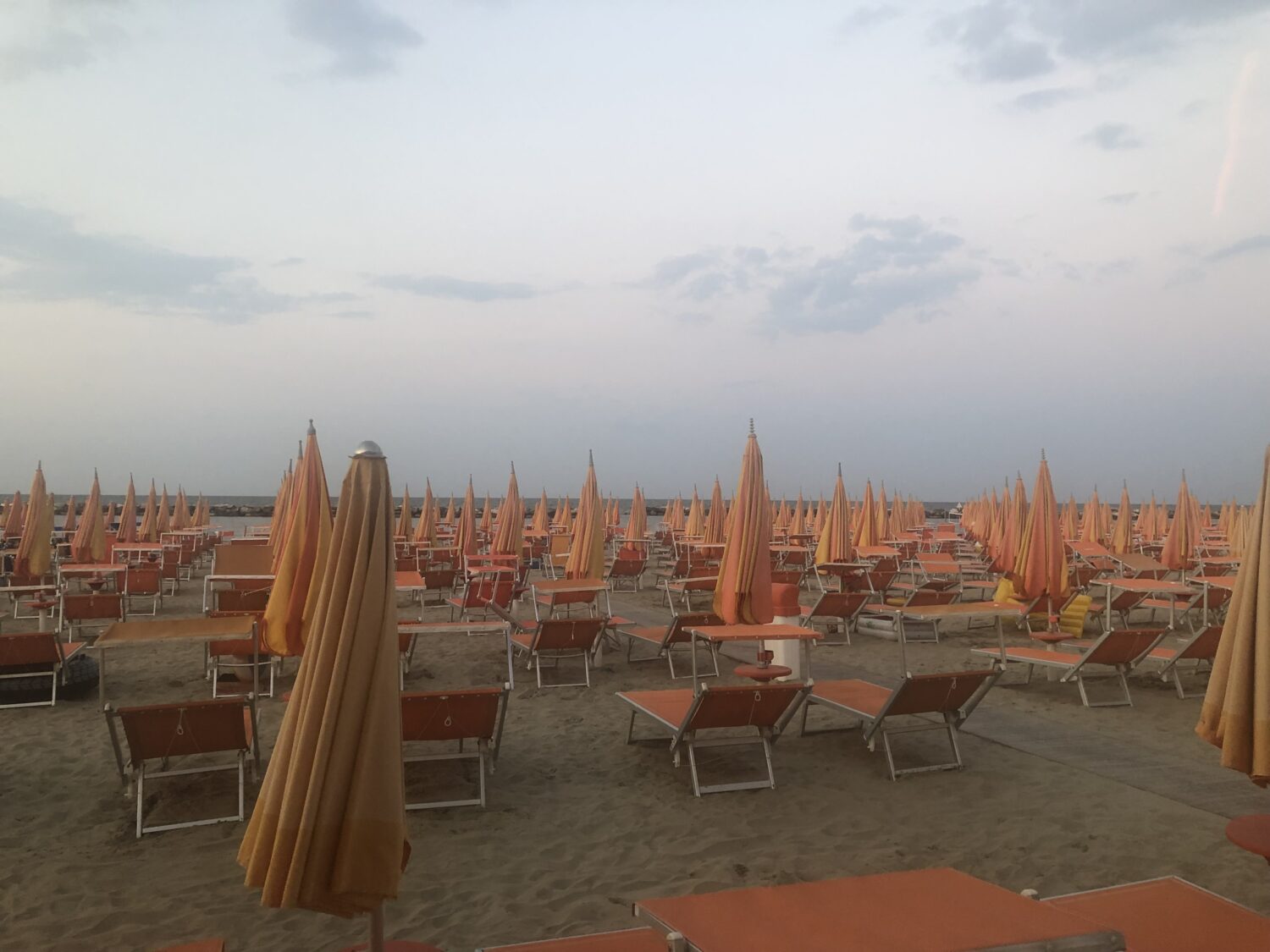
And so, this year, I decided to take a different tour from my usual summer break to see one of these summers. I polished up my 1981 Vespa – cliché, too, I know – and with my girlfriend, we set off on a 1000 km trip that touched on some places that, for one reason or another, have always been far away from me, trying to experience them through food.
This is a non-exhaustive reportage of the first 300 km that my Vespa travelled and in which I looked for the perfect piadina romagnola, the summer truffle gathered in the hinterland of central Italy and a few other small places beyond the tourist radar.
Piadina romagnola, the national food of the people of Romagna.
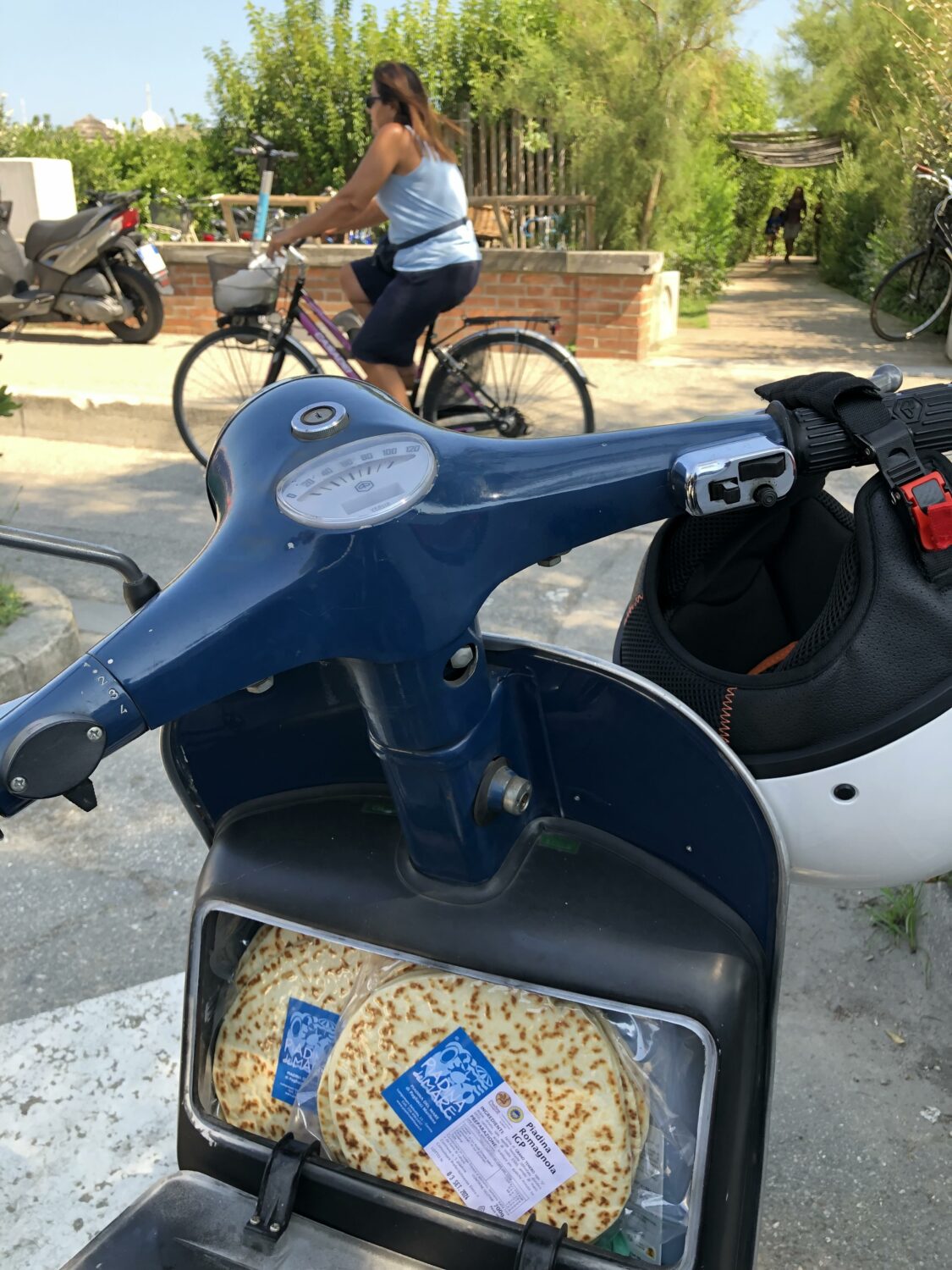
It took about two days to get to the Riviera Romagnola from Piacenza, the northernmost part of Emilia-Romagna and my hometown for the summer. Romagna, with over 90 km of coastline, is the summer destination for millions of tourists who love comfort, well-equipped beaches, nightclubs and good food. In fact, the culinary traditions of northern and central Italy, sea and hinterland meet here, with the brightest and most famous point reached by piadina. This is a thin flatbread made from wheat flour, lard and water, cooked on the spot in special ‘testi’ (very thin pans) and stuffed with various ingredients. The piadina is, in the words of the 20th-century Italian poet Giovanni Pascoli, “il pane, anzi il cibo nazionale dei romagnoli” (the bread, indeed the national food of the Romagnoli”) and varies in consistency and size from north to south: in Rimini and its province – the far south – the piadina will be thinner, wider and crispier; if you head north (to Ravenna), you will find a thicker, smaller and softer dough.
Here, to understand what Romagna and the atmosphere of the Romagna Riviera means, you have to look for a kiosk and eat the true national street food of the romagnoli.
Casina del Bosco, Rimini

On the Rimini promenade in 1995, a small kiosk called ‘Casina del Bosco’ started baking its thin, hand-pulled piadinas and has never stopped. Today there is no trace left of the small, family-run kiosk. A large venue with an open porch stormed by all the tourists in Rimini has taken its place, but the piadina and the soul of the Casina del Bosco have remained exactly the same. In true Rimini tradition, the dough is thin, wide and crispy, kneaded and rolled by hand and cooked on the spot on the. The list of ingredients for the filling is endless, both for the ones proposed by the restaurant – indeed, the combinations add up to more than fifty – and for the do-it-yourself piadina, which you can compose according to your own personal taste.
Viale Antonio Beccadelli, 15, Rimini RN
Picchio Verde, Igea Marina
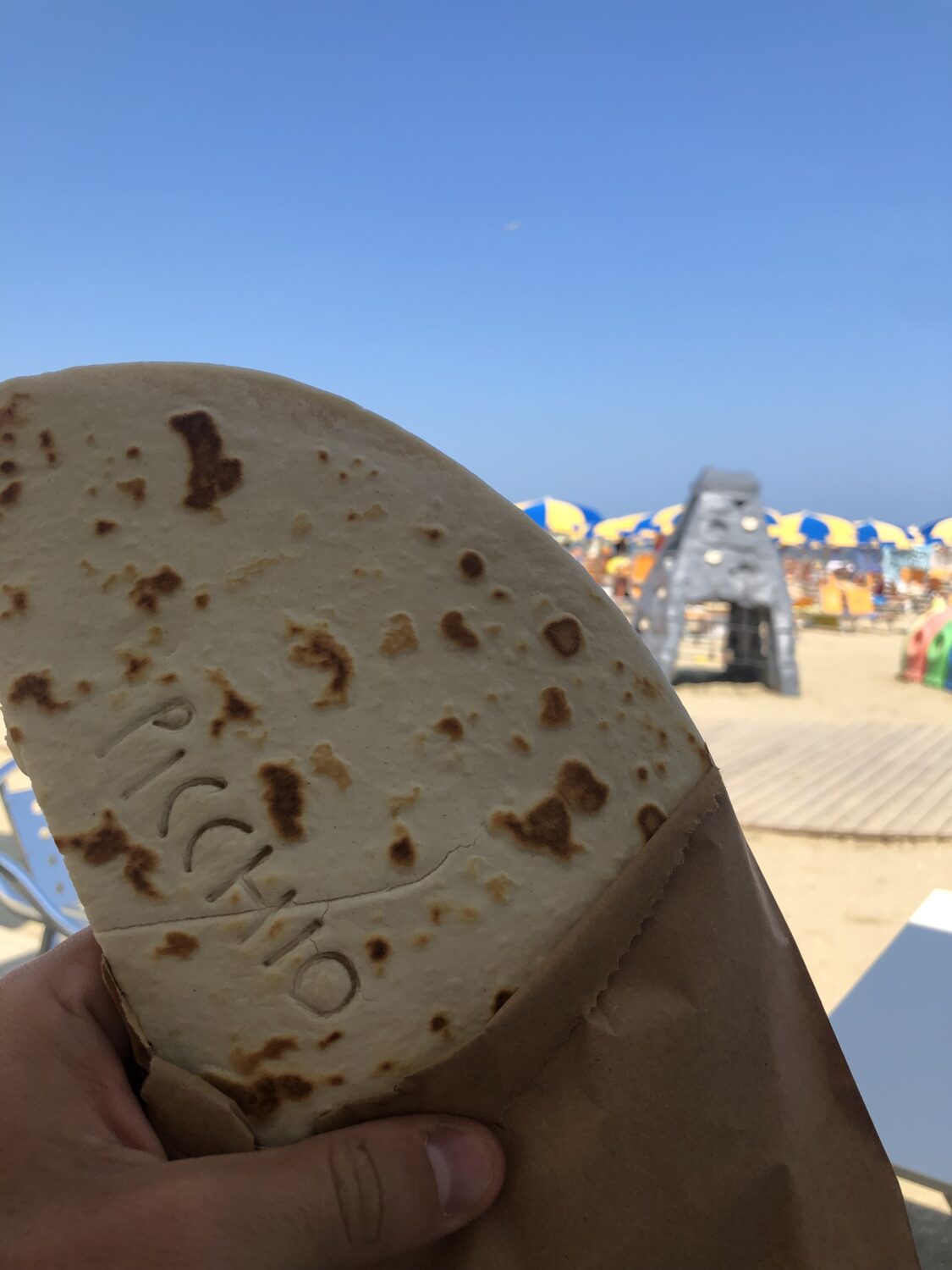
One of the historical kiosks of piadina romagnola is in Igea Marina, right in the centre of the Riviera. We arrive for lunch and it feels like we’re back in the 1980s. The kiosk is directly on the beach and people in swimming suits fresh from the sea wait to be called directly from the kitchen, via loudspeaker, to pick up their orders. This is folded into two thick wings containing the filling of premium ingredients. The dough is tender and not crunchy – the lard does its job perfectly here – and the signature ‘Picchio Verde’ is placed on each piadina with a toothpick. After being called on the microphone, you can eat seated at one of the few small tables on the sand or on the street, in true Romagna style: it does not matter if it is 30 degrees and sunny, the piadina is the street food of the Riviera and you have to eat it at any time and place.
Via Alfonso Pinzon, 157, Bellaria-Igea Marina RN
Da Mirko, Bellaria
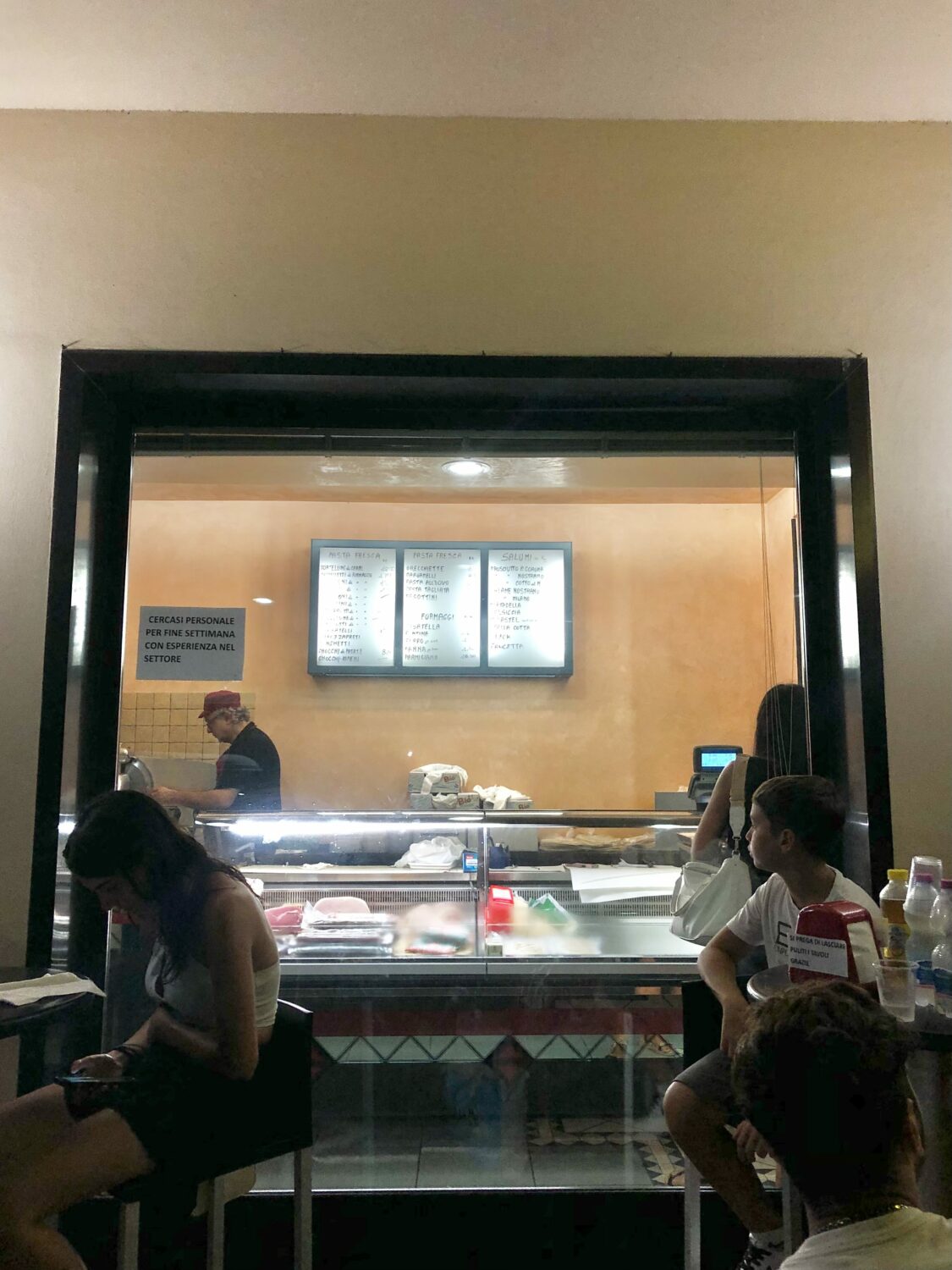
Of course, eating piadina for lunch and dinner is neither recommended nor advisable. But when you find yourself in front of Mirko‘s, I challenge anyone to give it up. The restaurant is right in the centre of Bellaria, a small town bordering Igea Marina, and a favourite place for groups of elderly people on their summer holidays. And they are to be trusted when it comes to traditional food. In fact, when we arrive at Mirko’s a couple are eating a piadina and a cassone (a kind of calzone made with the same dough) sitting on the circular brick bench outside the place. This one is in the 1990s style, with the menu written in marker on a blackboard, the counter with all the ingredients displayed, as well as the kitchen with the testo. Encouraged by a local friend, I convince myself to get the typical piadina of Bellaria: sausage and onion. The thick dough is softened by sautéed white onions, while the sausage, also freshly cooked, flavours the dish. Simple but firm, it was definitely the best piadina I have ever eaten.
Viale G. Pascoli, 40, Bellaria-Igea Marina RN
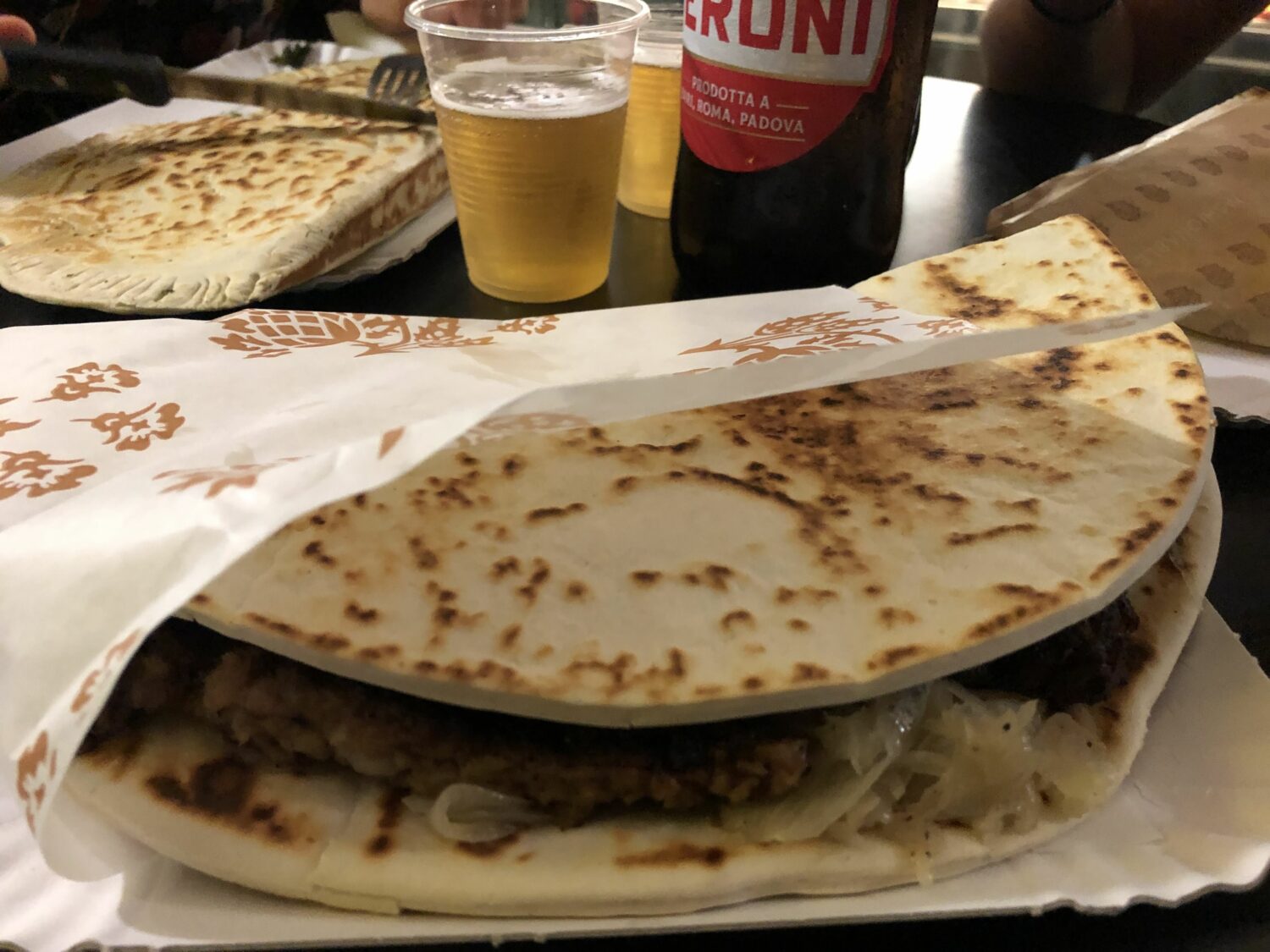
Piadina del Mare, Cervia
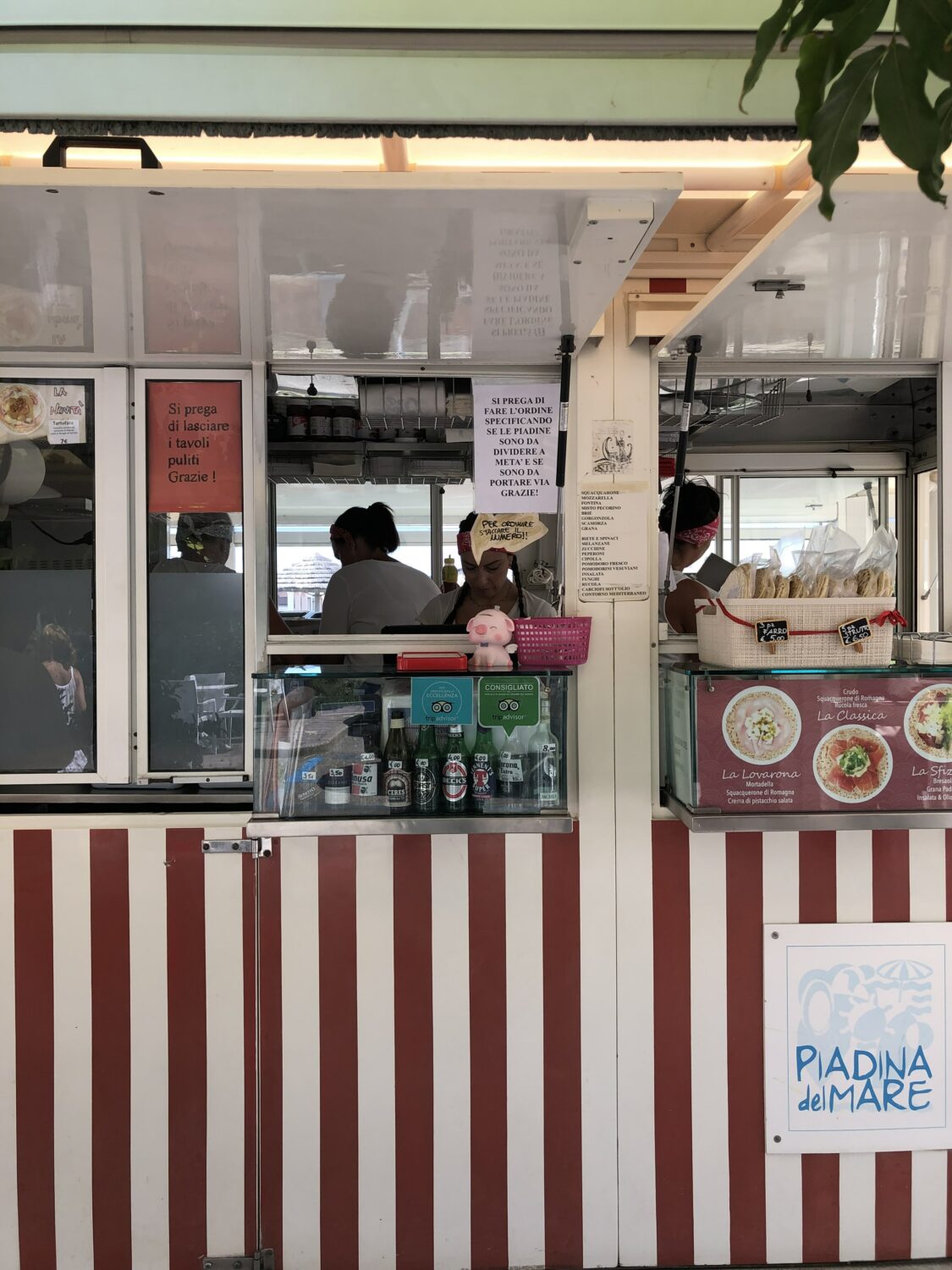
The next morning we head north following the 90 km of coastline that make up the Riviera. We are here in the middle of August and the heat is setting in, so we make a stop in Cervia, at the Piadina del Mare kiosk. As its name suggests, the kiosk is located on the promenade, a few steps from Pinarella, a long pine forest separating the beach from the town. Since 1960, this kiosk has been churning out more than 50 different fillings daily and was the first to have P.G.I. recognition for its piadina. Considering the time – it was almost noon and my stomach was still full from the night before – I opted for a breakfast of piadina squacquerone (fresh crescenza-like cow’s cheese, typical of the area) and fig jam. The dough was extremely fresh, as were the ingredients. With a cup of coffee, the piadina is a really good breakfast.
Lungomare Grazia Deledda, 11, Cervia RA
Piadineria al Parco, Cervia
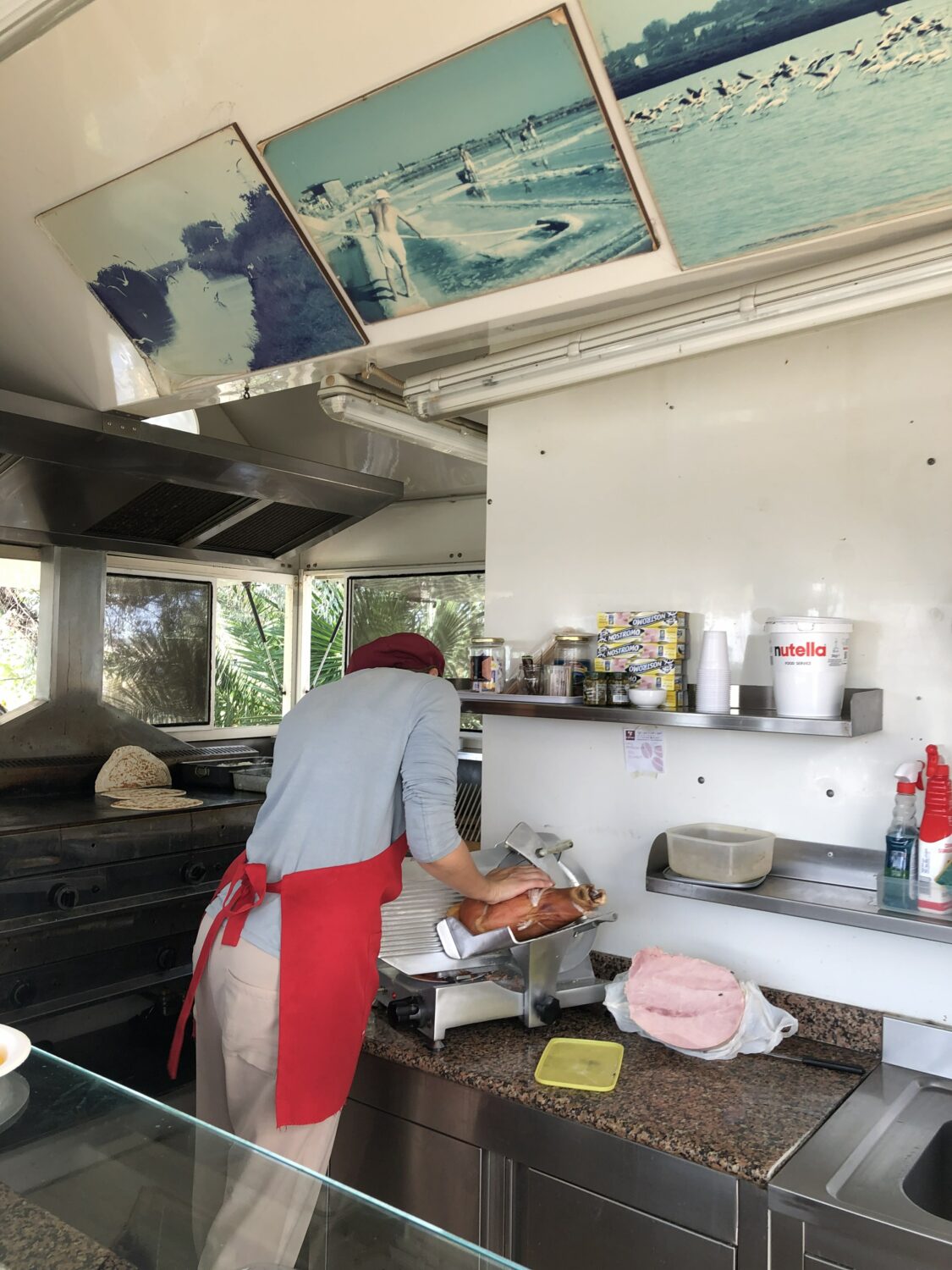
Leaving the town and the coast behind, we head inland when a small kiosk catches our attention. The place is surreal. It is on a square between two narrow strips of land, immersed in the water, that cross the Cervia salt pans. The Piadineria al Parco has been baking fresh piadinas for 30 years with ingredients only from the area and it also sells fruit and vegetables. The choice of fillings is not as wide as at the others, but eating a piadina with cooked ham, squacquerone cheese and rocket (the sacred trinity), seated at a table under the tamarisk trees and surrounded by the salt pans, is one of those things that makes you think you have found the non plus ultra of piadina kiosks.
Via Martiri Fantini, Cervia RA
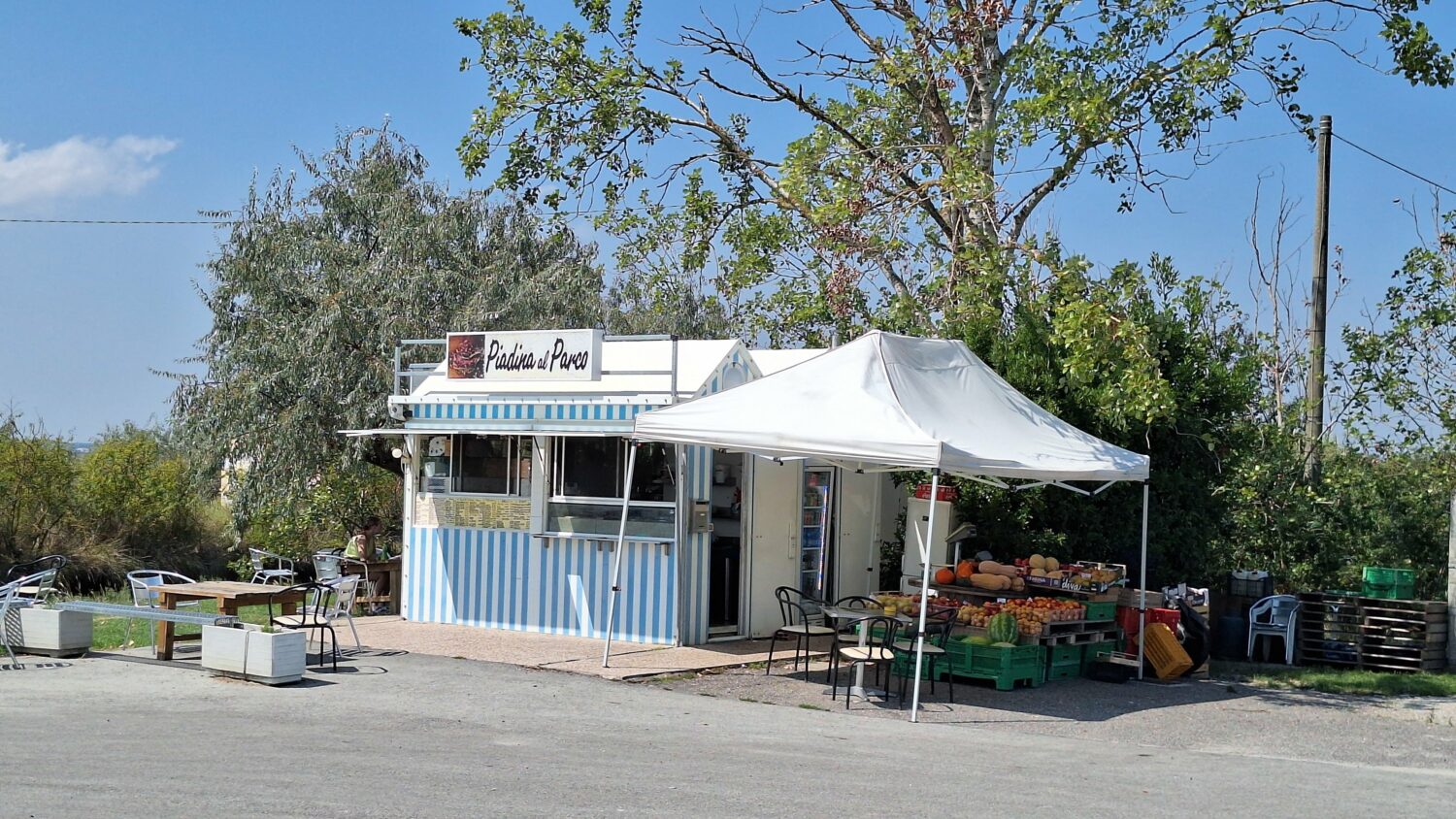
At midday, we are about 200 km away from our next destination. San Miniato is a Tuscan town in the province of Pisa, located on a hill where truffles can be found all year round. We arrive there late in the evening, in the middle of a village festival, and stop at an inn specialising in truffles. It is here that we decide to continue on for another 500 km, looking for inns and local cavatori (truffle hunters) all the way to the Marche region, passing through the truffle homeland of central Italy, Umbria.
To be continued…
Lorenzo Villa is a writer and editor based in Milan. He writes about lifestyle for Harper’s Bazaar Italia and collaborates with the literary magazine Galápagos. All photos, including the header image of Picchio Verde, by Lorenzo Villa.